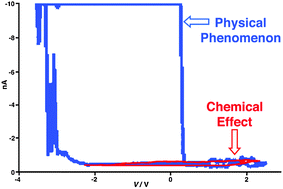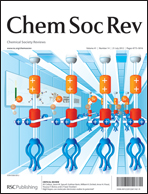High hopes: can molecular electronics realise its potential?
Abstract
Manipulating and controlling the self-organisation of small collections of molecules, as an alternative to investigating individual molecules, has motivated researchers bent on processing and storing information in molecular electronic devices (MEDs). Although numerous ingenious examples of single-molecule devices have provided fundamental insights into their molecular electronic properties, MEDs incorporating hundreds to thousands of molecules trapped between wires in two-dimensional arrays within crossbar architectures offer a glimmer of hope for molecular memory applications. In this critical review, we focus attention on the collective behaviour of switchable mechanically interlocked molecules (MIMs)—specifically, bistable rotaxanes and catenanes—which exhibit reset lifetimes between their ON and OFF states ranging from seconds in solution to hours in crossbar devices. When these switchable MIMs are introduced into high viscosity polymer matrices, or self-assembled as monolayers onto metal surfaces, both in the form of nanoparticles and flat electrodes, or organised as tightly packed islands of hundreds and thousands of molecules sandwiched between two electrodes, the thermodynamics which characterise their switching remain approximately constant while the kinetics associated with their reset follow an intuitively predictable trend—that is, fast when they are free in solution and sluggish when they are constrained within closely packed monolayers. The importance of seamless interactions and constant feedback between the makers, the measurers and the modellers in establishing the structure-property relationships in these integrated functioning systems cannot be stressed enough as rationalising the many different factors that impact device performance becomes more and more demanding. The choice of electrodes, as well as the self-organised superstructures of the monolayers of switchable MIMs employed in the molecular switch tunnel junctions (MSTJs) associated with the crossbars of these MEDs, have a profound influence on device operation and performance. It is now clear, after much investigation, that a distinction should be drawn between two types of switching that can be elicited from MSTJs. One affords small ON/OFF ratios and is a direct consequence of the switching in bistable MIMs that leads to a relatively small remnant molecular signature—an activated chemical process. The other leads to a very much larger signature and ON/OFF ratios resulting from physical or chemical changes in the electrodes themselves. Control experiments with various compounds, including degenerate catenanes and free dumbbells, which cannot and do not switch, are crucial in establishing the authenticity of the small ON/OFF ratios and remnant molecular signatures produced by bistable MIMs. Moreover, experiments conducted on monolayers in MSTJs of molecules designed to switch and molecules designed not to switch have been probed directly by spectroscopic and other means in support of MEDs that store information through switching collections of bistable MIMs contained in arrays of MSTJs. In the quest for the next generation of MEDs, it is likely that monolayers of bistable MIMs will be replaced by robust crystalline extended structures wherein the switchable components, derived from bistable MIMs, are organised precisely in a periodic manner.


 Please wait while we load your content...
Please wait while we load your content...